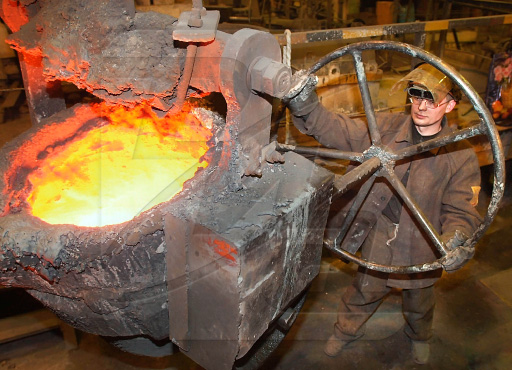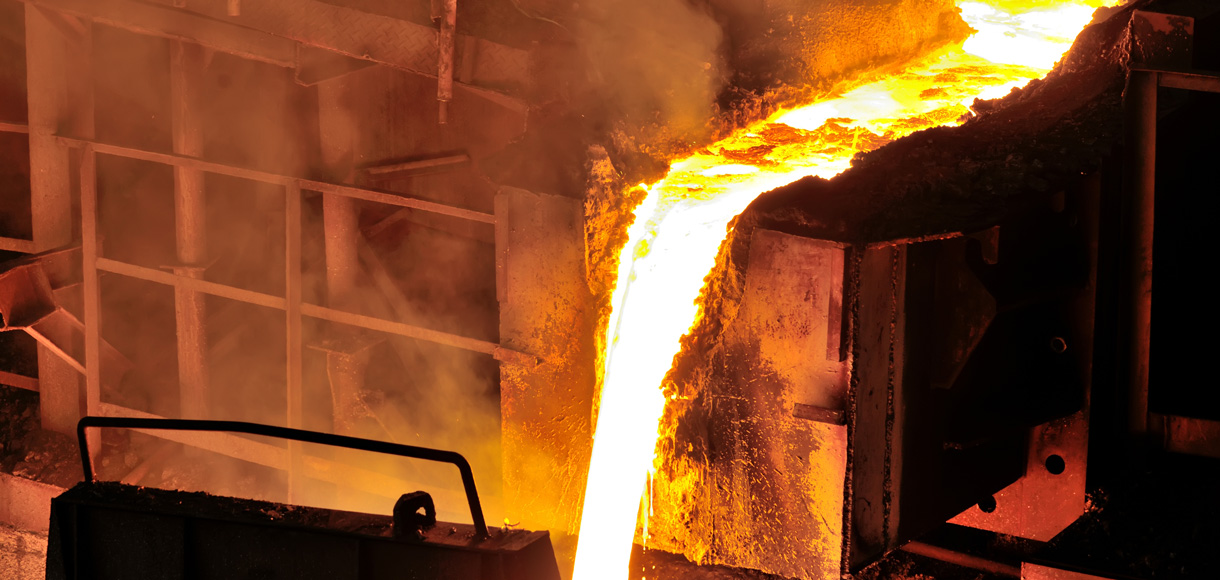How High-Tech Materials Are Transforming the Casting Foundry Industry
Wiki Article
The Impact of Innovation on Effectiveness in the Casting Foundry Industry
The Casting Foundry industry has experienced noteworthy improvements as a result of technical innovations. Automation and robotics have structured procedures, boosting manufacturing prices while lessening mistakes. Furthermore, real-time tracking and data analytics are reshaping decision-making processes, resulting in more efficient resource management. As these technologies remain to evolve, they present both opportunities and obstacles. Comprehending the full impact of these adjustments is essential for sector stakeholders to grow and adapt in a competitive landscape.The Duty of Automation in Modern Foundries

These systems facilitate tasks such as mold development, pouring, and air conditioning, enabling real-time surveillance and modifications to maximize efficiency. Additionally, automation makes it possible for foundries to run continuously, raising output and decreasing lead times.
The combination of automated services also sustains better source management, as equipments can be configured to utilize products much more efficiently, decreasing waste. By carrying out automation, modern factories can adapt to changing need, making sure that they remain competitive in a swiftly developing sector. Ultimately, automation stands for a transformative pressure, redefining conventional Foundry techniques and paving the method for future advancements.
Enhancing Quality Assurance Via Technology
Modern technology revolutionizes high quality control in foundries, guaranteeing that items fulfill strict market criteria. Advanced assessment systems, such as laser scanning and 3D imaging, enable accurate dimension of cast elements, recognizing problems at the earliest stages. These tools assist in real-time surveillance of making processes, permitting instant changes and minimizing discrepancies from high quality criteria.Information analytics plays a crucial duty in top quality control by assessing patterns and forecasting possible failings, which boosts the integrity of the production line. Implementing artificial intelligence formulas allows foundries to continuously boost their high quality guarantee processes by picking up from historical information
Furthermore, the integration of electronic doubles allows virtual simulations of manufacturing procedures, enabling extensive testing and recognition before physical Casting occurs. Jointly, these technological advancements not just raise the quality of actors products but additionally reinforce customer satisfaction and trust fund in the factory's output.
Lowering Waste and Energy Intake

Furthermore, the introduction of 3D printing technology in mold and mildew development significantly decreases product waste by enabling the production of intricate styles without the requirement for extreme machining. Energy-efficient devices and renewable power resources are progressively being adopted, contributing to reduced operational prices and a smaller carbon impact.
These technologies not only boost operational effectiveness yet likewise advertise sustainable methods within the Casting Foundry industry, lining up with global efforts to lower environmental impacts and improve source management.
The Impact of Information Analytics on Choice Making
Data analytics has become a crucial tool for improving decision-making procedures in casting foundries. By leveraging information collected from different phases of production, factories can determine inefficiencies and areas for enhancement. As an example, real-time monitoring of equipment performance permits supervisors to make informed decisions relating to upkeep timetables, reducing downtime and enhancing outcome.Anticipating analytics aids forecast demand fads, enabling shops to readjust manufacturing degrees as necessary and lessen excess stock. This ability not only streamlines procedures however likewise aids in source allowance, making certain that materials are used efficiently.
In addition, data-driven understandings empower monitoring to review the efficiency of different alloys and products, resulting in improved item quality. As factories progressively adopt information analytics, the integration of these understandings into strategic decision-making procedures paves the means for improved operational efficiency and affordable advantage in the industry.
Incorporating Robotics Into the Molding Process
The combination of robotics into the molding procedure provides significant advantages for casting shops. By automating tasks, these systems can lower human error and boost production speed, bring about much more reliable operations. As innovation breakthroughs, the capacity for robotics to change traditional molding methods comes to be increasingly obvious.Benefits of Robotic Automation
Robotic automation uses substantial advantages in the molding process of casting factories, boosting both efficiency and precision. By making use of robot systems, shops can achieve higher production rates because of the constant speed and dependability of equipments. These robotics can execute repetitive tasks with very little downtime, which streamlines operations and maximizes Casting Foundry output. In addition, the assimilation of robotics enables greater flexibility in production, enabling factories to swiftly adjust to differing demands and complex designs. Robot automation contributes to improved office safety and security by minimizing the requirement for human intervention in unsafe settings. Eventually, the incorporation of robotics in the molding procedure causes enhanced workflows, lowered operational costs, and boosted product quality in the Casting Foundry sector.Minimizing Human Error
Although human ability and intuition have actually generally played crucial functions in the molding procedure, integrating robotics significantly minimizes the danger of human mistake. Robotics offers precision and uniformity, ensuring that each mold is produced with exact specs, reducing variability created by fatigue or diversion amongst human operators. With sophisticated sensing units and software, robotic systems can detect anomalies and make real-time adjustments, further lessening the opportunity of problems. The automation of repeated jobs allows human workers to concentrate on even more complex duties, enhancing overall quality assurance. Additionally, the implementation of robotics assists in an extra systematic approach, resulting in standardization throughout manufacturing procedures, which is essential for keeping premium outcomes in the Casting Foundry market.Enhancing Manufacturing Rate
Incorporating robotics right into the molding procedure not only minimizes human error however additionally significantly improves production speed within casting foundries. By automating repetitive tasks, robotics can run continually, enabling greater outcome rates compared to traditional approaches. Their accuracy warranties that mold and mildews are continually loaded, lessening downtime triggered by adjustments or issues. In addition, robotics make it possible for fast modifications in production lines, suiting different styles without considerable hold-ups. Consequently, factories can respond extra quickly to market demands, boosting their one-upmanship. The combination of advanced robotics modern technologies improves the workflow, enhancing source appropriation and minimizing labor costs. Generally, the adoption of robotics in molding processes substantially pushes effectiveness and productivity in the Casting Foundry market.Overcoming Difficulties in Modern Technology Adoption

Future Fads in Casting Foundry Modern Technology
What developments lie in advance for the Casting Foundry industry? The future of casting Foundry innovation is poised for considerable improvement with developments such as 3D printing, automation, and fabricated knowledge. These advancements assure to boost precision and reduce waste in the Casting process. 3D printing allows the production of complicated geometries that standard techniques can not accomplish, while automation enhances operations, boosting general effectiveness. Furthermore, the combination of AI and artificial intelligence will help with predictive upkeep, enhancing devices performance and minimizing downtime.Moreover, the fad in the direction of lasting methods is expected to form the sector, with a concentrate on eco-friendly products and processes. Digital doubles, which replicate real-world operations, could additionally end up being commonplace, allowing shops to evaluate scenarios and make data-driven choices. Jointly, these developments are readied to redefine the Casting Foundry landscape, driving performance and sustainability while satisfying the developing needs of different industries.
Often Asked Questions
Just How Does Technology Influence Worker Responsibility in Foundries?
Innovation considerably improves employee functions in foundries by automating repeated jobs, improving accuracy, and requiring brand-new ability. Workers increasingly concentrate on overseeing sophisticated equipment and data analysis, bring about a shift in work obligations and called for competencies.What Are the Expenses Linked With Implementing New Technologies?
The expenses of carrying out brand-new technologies include preliminary financial investments, training expenses, continuous upkeep, and possible disturbances during changeover. Organizations should meticulously assess these economic aspects to ensure effective integration and lasting long-lasting advantages.How Can Little Factories Adopt Innovation Affordably?
To adopt modern technology cost effectively, little shops can explore grants, partnerships, and affordable remedies. Step-by-step upgrades, staff member training, and leveraging existing sources additionally boost performance without considerable monetary stress, promoting progressive technological integration into procedures.What Abilities Are Required for Workers in Tech-Driven Foundries?
Workers in tech-driven foundries call for abilities in information analysis, device operation, and software program effectiveness. In addition, flexibility to brand-new tools and technologies, analytic capacities, and partnership with engineering groups are essential for success in this advancing setting.Exactly How Does Technology Influence Security in Foundries?
Technology substantially improves safety and security in factories by automating dangerous jobs, utilizing advanced surveillance systems, and helping with real-time communication. These advancements decrease office mishaps and improve emergency situation response, inevitably fostering a more secure environment for all employees.Technology changes quality control in shops, ensuring that items meet rigid sector requirements. Technologies such as automated molding systems and advanced melting modern technologies enable factories to maximize material usage and lower energy demands. As the Foundry sector increasingly identifies the advantages of arising technologies, getting rid of obstacles in technology adoption ends up being essential for improving functional performance. Technology considerably reshapes worker functions in shops by automating recurring jobs, boosting accuracy, and demanding new ability sets. Technology significantly boosts safety and security in factories by automating harmful jobs, using innovative monitoring systems, and helping with real-time communication.
Report this wiki page